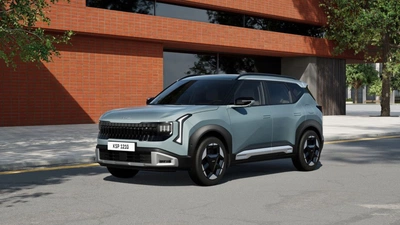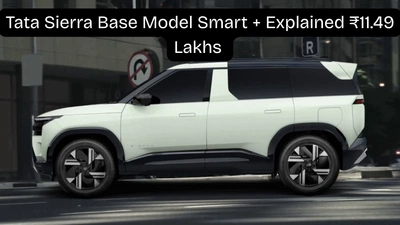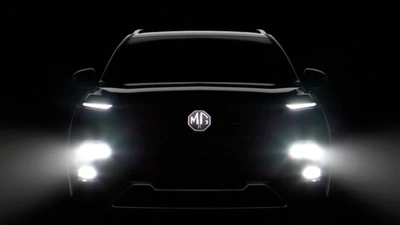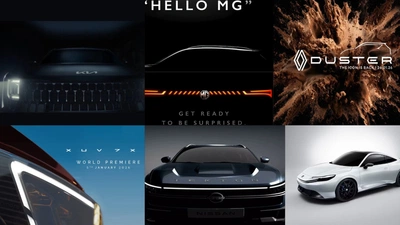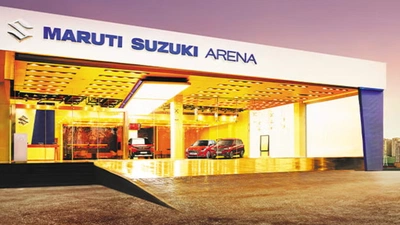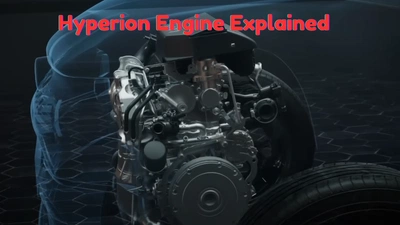Maruti Set to Launch Creta Rival on September 3
The upcoming Escudo will be the flagship SUV sold exclusively through Maruti's Arena dealerships
By Salil Kumar
Published July 25, 2025

Table of Contents
- Maruti Escudo Powertrain Options
- Features: On Par or Lagging Behind Rivals?
- Toyota’s Rebadged Escudio
Maruti Suzuki has announced September 3, 2025 to be the launch date of its upcoming SUV, likely to be named the ‘Escudo’. Within Maruti’s portfolio, this SUV will be positioned between the Brezza and the Grand Vitara. This marks the introduction of a new flagship product in Maruti’s Arena dealership network, which has long been waiting for a premium offering since the launch of the existing Brezza in 2023. The Escudo will compete against established rivals like the Hyundai Creta, Kia Seltos, and Honda Elevate.
Maruti Escudo Powertrain Options
The Escudo could share its powertrains with the Grand Vitara. These include Maruti’s tried and tested K15 (1.5 litre) naturally aspirated petrol engine producing around 100bhp and 139Nm of torque, a 116bhp hybrid, and a factory-fitted CNG producing 86bhp. In terms of transmission options, expect the same 5-speed manual and 6-speed torque converter automatic that drive the Brezza and Grand Vitara.
However, with rivals like the Creta and Seltos offering multiple engine (1.5L petrol, 1.5L turbo petrol, and 1.5L diesel) and gearbox (6-speed manual, 6-speed IMT, 6-speed torque converter, 7-speed DCT, and a CVT) combinations, the Escudo has a concerning disadvantage. Maruti will need to offer at least a turbo petrol engine option if it wants to challenge the established segment leaders, as its K15 petrol engine falls short in terms of performance, in contrast to the turbo petrol and diesel engines on the Creta and Seltos. Even the Honda Elevate’s naturally aspirated 1.5-litre i-VTEC petrol engine feels more lively, offering much better performance.
If Maruti offers its 1.0-litre Boosterjet turbo petrol in the Escudo, as seen on the Fronx, it could marginally bridge the performance gap. However, this engine produces just 100bhp and 147Nm of torque, still falling short of the 158bhp and 253Nm offered by the Seltos and Creta’s turbo petrol engines. This could potentially limit the Escudo’s appeal among enthusiasts looking for strong highway performance and effortless overtakes.
Features: On Par or Lagging Behind Rivals

The Escudo is expected to offer several key highlights that justify Maruti’s Arena range of cars. These may include a 10-inch touchscreen infotainment system with wireless Android Auto and Apple CarPlay, a heads-up display, a wireless charger, a panoramic sunroof, and a 360-degree camera. An Arkamys-tuned sound system and connected car features through Suzuki Connect could also be offered, enhancing in-cabin entertainment and vehicle connectivity.
While these features should put it on par with its rivals, there are certain areas where it could fall behind. The Kia Seltos and Hyundai Creta, for instance, offer powered driver seats, ventilated front seats, electronic parking brakes with auto-hold, and Level 2 ADAS features including lane keep assist and adaptive cruise control in their higher variants. The Escudo, given its expected lower price range, is unlikely to offer ADAS. The Honda Elevate also misses out on ADAS, but makes up with its robust build quality and Honda’s i-VTEC driving feel, something the Escudo’s naturally aspirated K15 might struggle to match.
Moreover, the Seltos and Creta offer premium Bose and JBL sound systems respectively in their top trims, along with dual-zone climate control, digital instrument clusters, and powered tailgates. Many of these features may not make it to the Escudo to keep costs competitive.
However, on the plus side, Maruti could undercut these rivals by offering a panoramic sunroof, tyre pressure monitoring system, and a heads-up display at a lower price point. Additionally, Maruti’s robust service network, reliable mechanicals, and fuel-efficient powertrains will continue to attract buyers prioritising practicality and low running costs over outright performance.
Toyota’s Rebadged Escudio
Interestingly, after the Vitara Brezza, Baleno, Grand Vitara, Fronx, and Ertiga, we could see Toyota rebadging the Escudo next, soon after its launch. This car would be positioned between the Taisor and Hyryder in Toyota’s lineup, likely featuring minor design tweaks and badge replacements as seen on previously shared models.
The Escudo enters a highly competitive segment dominated by feature-rich, powerful, and premium-feeling SUVs. The Hyundai Creta and Kia Seltos continue to lead this space with their wide variety of engine and gearbox offerings, plush interiors, and broad feature lists. The Honda Elevate appeals to buyers looking for a well-built, reliable, naturally aspirated SUV with spacious interiors and traditional Honda refinement.
The Escudo could gain some advantage through its expected aggressive pricing strategy. While an official announcement on its prices is still awaited at the time of writing this article, we expect the Escudo to range from approximately ₹10.00 lakh to ₹17 lakh ex-showroom, undercutting all its main rivals. This positioning would make it an attractive option for buyers prioritising practicality and value for money over outright performance or premium features.
Further, Maruti’s strong brand recall, widespread after-sales support, low maintenance costs, and fuel efficiency remain unmatched in the mass-market space. These factors could ensure the Escudo turns out to be yet another dependable, practical, and fuel-efficient Maruti that appeals to the head, even though it may not tug at the heartstrings of enthusiasts.
Write a comment
Comments
No comments yet. Be the first to comment!
